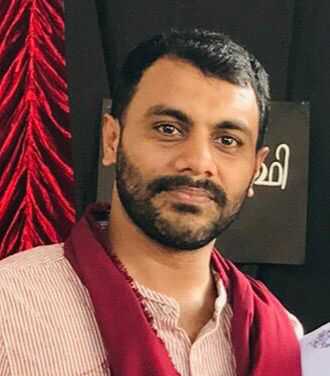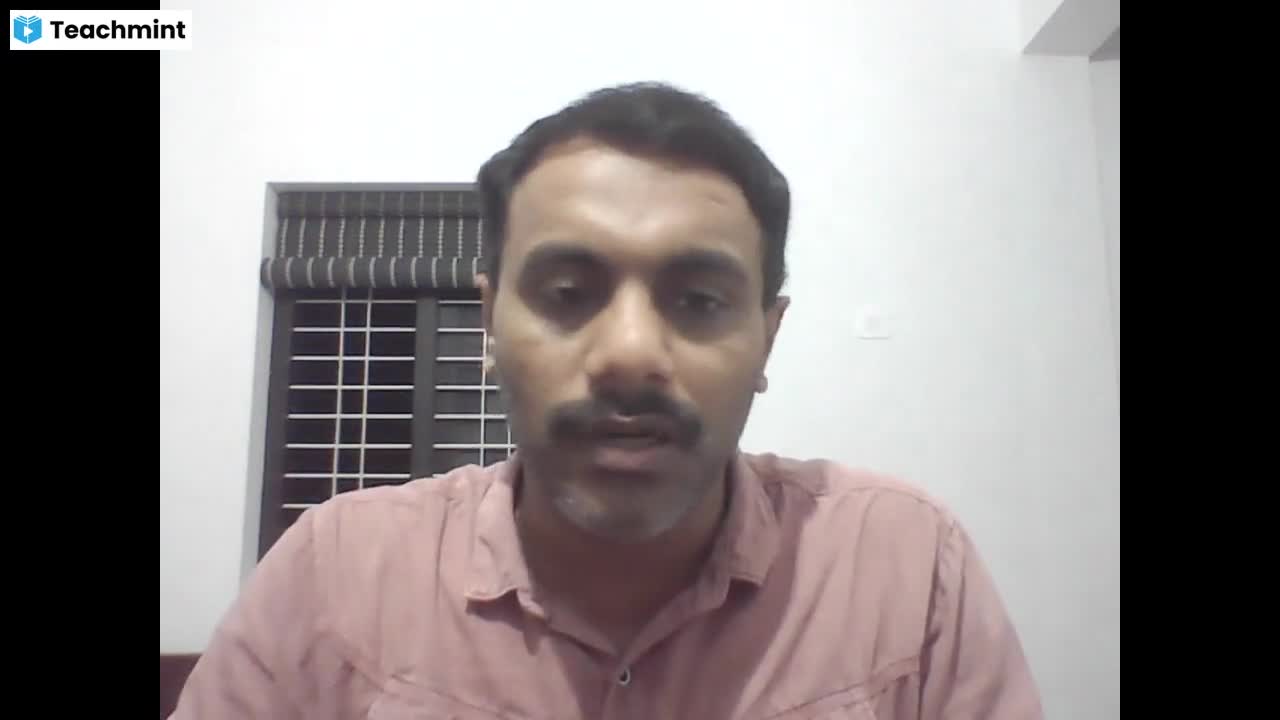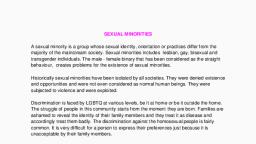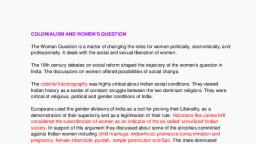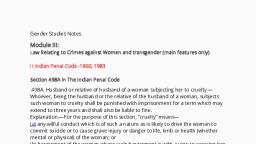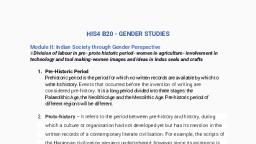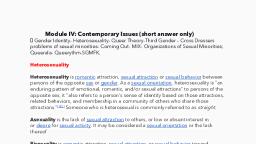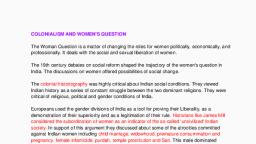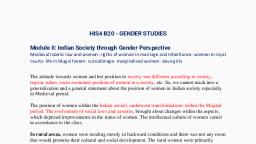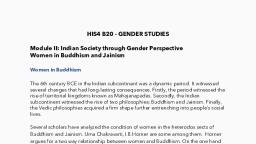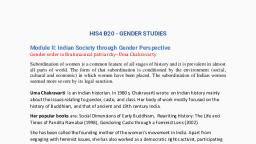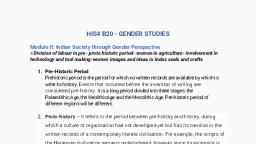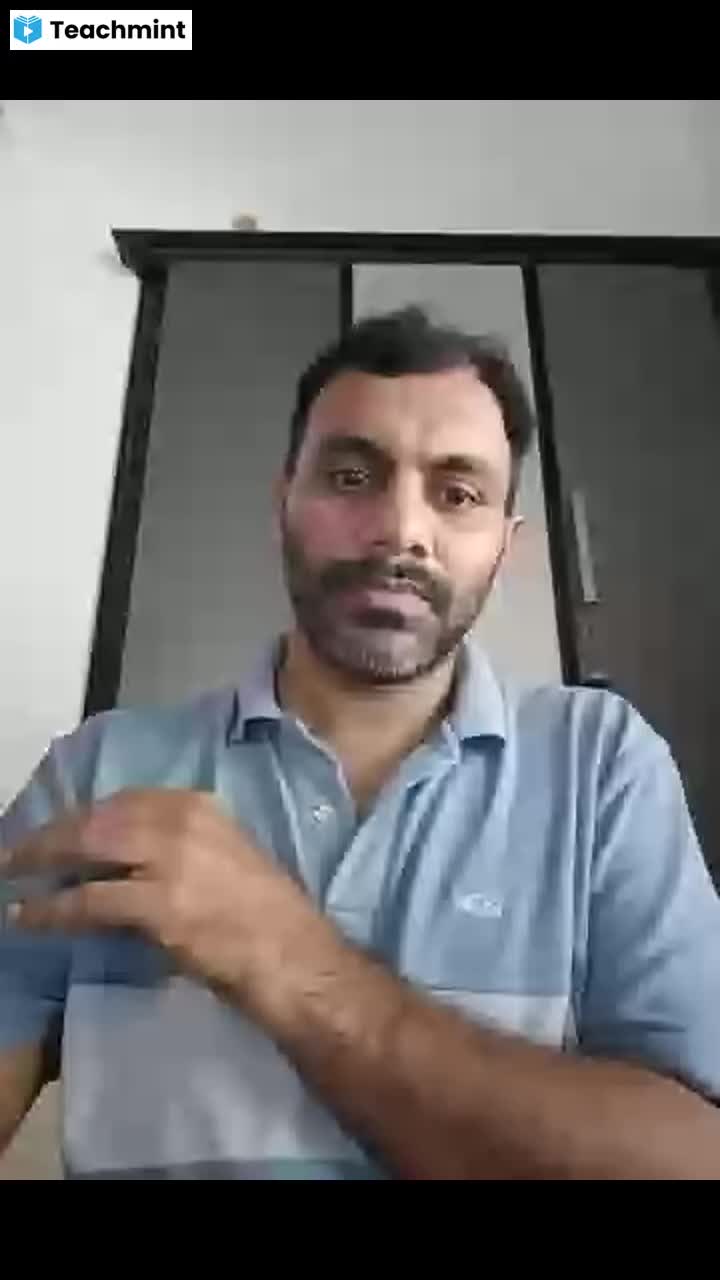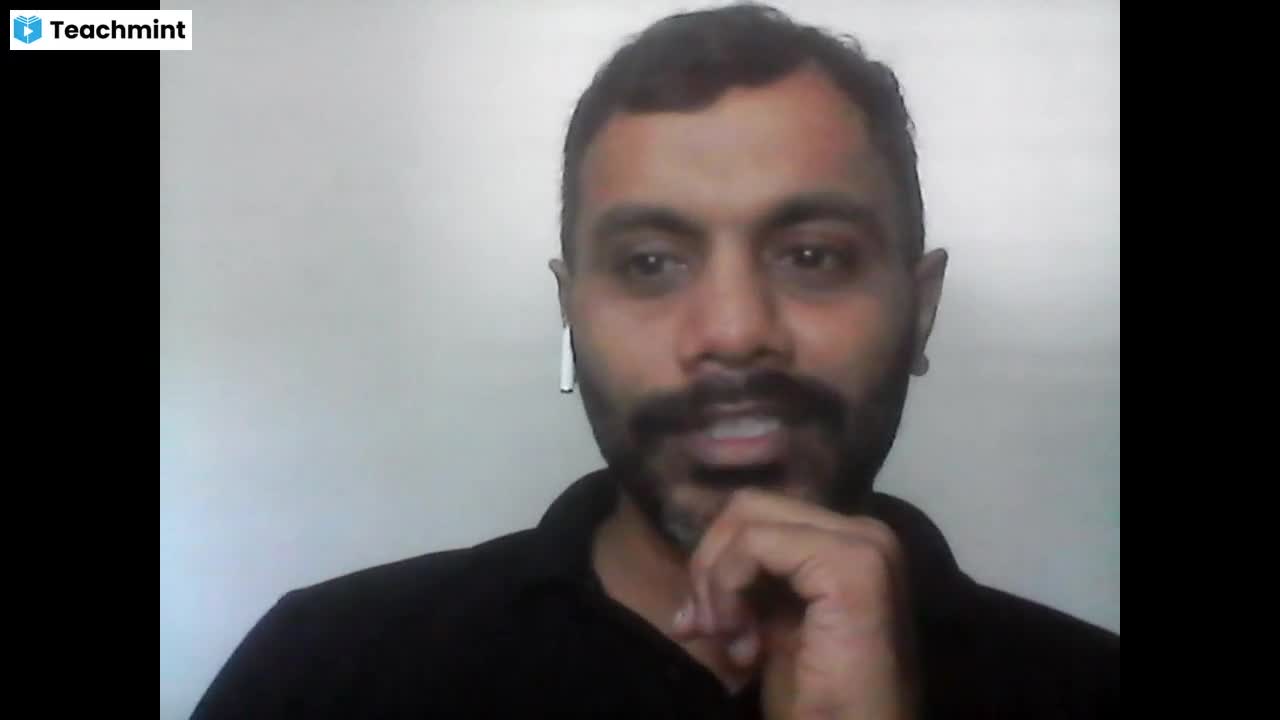Page 1 :
Module III: Social, labour, educational and health issues of women at present, Changing concept of family and marriage- labour and health issues- participation, of women in politics-women literacy, Changing concept of family and marriage, Marriage is the legally or formally recognized union of two people as partners in a personal, relationship (historically and in some jurisdictions specifically a union between a man and a, woman)., Marriage is considered and the basic of family which is considered as the basic unit of a society, in India, The concept of marriage is varying to society, region, religion. The idea of marriage and, , how we define marriage has changed drastically over time., The debate on marriage goes through, 1., 2., 3., 4., 5., 6., 7., 8., , Is it only allowed between men and women, Inter-caste and inter-religious marriages, The age of marriage, Consent for marriage, Customs in marriage – dowry, new trends and customs, Divorce – right for divorce, Widow marriage, The issue of Polygamy, polyandry (a woman takes two or more husbands at the same, time), 9. The issue of love marriage and fixed marriage – attitudinal changes, 10. Changes in the fertility behavior, family planning, etc., 11. Concept of living together, 12. Changes in the concept of family – nuclear familyIn early days it was only being defined as the joining of a man and a woman, and now it is, ‘the joining of two people that love and support each other’ beyond sex. Today, we live in a, world where, more than ever, gay marriage or the marriage between two individuals of the, same sex is starting to be accepted., All religions consider marriage is only between a man and a woman., Causes for the changes, 1. Cultural changes – migration. travel, 2. Economic: Empowerment: Education and Job (Female ?) - financial freedom
Page 2 :
3. Social: Changes in the family structure: join to nuclear, Attitudinal Changes: New world system - marriage was considered as the ultimate, aim of life, duty of a parent, dream of a family, 4. Political: Changes in the government policies and approach, 5. Legal: Changes in the law and regulations, Negative and Positives, , labour and health issues, According to the research, the issues that concern women and work the most are:, 1., 2., 3., 4., 5., , WORK-LIFE BALANCE, EQUAL PAY, HARASSMENT, CAREER OPPORTUNITIES, CHILDREN AND CAREER, , Harassment in the workplace also emerges as one of working women’s five top, concerns. Nearly one third of women interviewed admit to having experienced, harassment, although more than 60% do not report it. Indian women are the most, likely to speak up (53%), a clear change of attitude since the fatal attack of a female, student on a bus in Delhi in 2012., Women have been trying to break away from norms and standards set by society., They have been marching for equal rights and fighting for their rightful place in the, world. True, the #MeToo movement has begun to smash down centuries of, patriarchy, but we still have a long way to go, especially in corporations, where the, adage glass ceiling is still quite prevalent., The Challenges, For the last four years, Leanin.org and McKinsey have been researching the, participation and inclusivity of women in the workplace. While it might seem like, the world is progressing and there's a rising involvement of women in the, workplace, the reality is quite different. As the report suggests, "progress isn't slow., It's stalled.", , Representation of Women
Page 3 :
Women continue to remain underrepresented at every level, starting from entrylevel jobs to C-suite roles. According to the Women In the Workplace 2018 report,, representation of women of color is the least causing them to stay behind white, men, men of color, and white women. Women of color comprise only 17% of entrylevel roles and 4% of C-Suite positions., This underrepresentation gets worse in senior management positions. Only 22% of, C-suite executives are women. Compared to 62% of men in managerial positions,, only 38% of women are promoted to be managers., What’s interesting to see is that the number of women and men leaving their, companies is almost the same. Therefore, attrition can’t be blamed for this, inequality and misogyny., , Gender Pay Gap, Women earn 77.9 cents for every dollar earned by men. Research by Payscale says, that in 2018, the median salary for women is roughly 22 percent lower than the, median salary for men., In India, too, the fight for equal wages continues. The Labour Bureau in India has, found that in rural areas in the agricultural sector, the daily wage for men is, ₹264.05 and ₹205.32 for women. In non-agricultural sects, the average daily wage, rate for men is ₹271.17, while for women it is ₹205.90., , Sexual Harassment, The #MeToo movement brought out numerous cases of women facing sexual and, non-sexual harassment in the workplace.These cases ranged from unwelcome, verbal, visual, non-verbal or physical harassment., The Women in the Workplace report found that 35% of women in full-time, corporate sector jobs have experienced sexual harassment. Another study by EEOC, estimates that 75% of women subject to such hostile situations will not report their, harassment. And especially when the abuser is someone in senior positions., People often ask, "why did the victim not report?" The primary reason for this is the, fear of being fired. The same research by EEOC found that "75% of harassment, victims experienced retaliation when they reported it."
Page 4 :
Unemployment Penalty, During child-rearing years, the unemployment penalty for women is longer. This, means that when women take longer leaves, they have a much harder time getting, rehired., The report shows that the percentage of men unemployed for 12+ months, between the age of 20-29 is 4% while for women it’s 11%. Between the age group, 30-44, the number of unemployed men and women is 10% and 20% respectively., This ultimately reflects in the gender pay gap making it harder for women to hold, senior-level positions., , Race and Ethnicity, 64% of Americans say that racism continues to be a major problem in society. In the, workplaces, too, it continues to be a problem. White men and women continue to, get hired over people of color, women from diverse ethnicities., A typical example of racial and ethnic discrimination faced by women in the, workplace is telling them that they won’t fit in with the culture and work ethics and, hiring a white person over them., , Pregnancy Discrimination, The Guardian reports that over 50,000 women lose their jobs over maternity, discrimination., A type of employment discrimination, pregnancy discrimination, refers to when, women in the workplace are fired, not hired, or discriminated against their, pregnancy or are expecting., The discrimination can occur in the form of offensive comments by senior officials,, clients, peers, and customers regarding their physical and medical condition. Some, other ways are employers reducing a female employee’s working hours, pay,, changing her benefits, refusing to promote her, or forcing her to take time off (paid, or unpaid).
Page 5 :
‘That Time of The Month’, Women all over the world have at least once in their life have been subject to, prejudice when on their periods. When they show emotions like anger or irritation,, they are mocked by comments like, “stop fussing. Are you on your periods?”, Women undergo grueling physical pain while on their periods. A classic example of, everyday sexism is male employees considering women taking leaves while, menstruating as an excuse not to come to work., A ridiculous incident occurred in 2017 when a woman in Georgia was fired for,, believe it or not, menstruating. Her “offense” was that on a heavy flow day, she, stained her office chair., , Women Bosses, Lots of men feel threatened by female bosses. There are countless studies which, show that men prefer male over female bosses. In recorded Gallup polls since the, 1950s, the number of respondents saying they would like to work for a woman has, never exceeded 25%., This is the reason for the lack of representation of women in the workplace, because there is a lack of powerful female leaders at the top, there's nobody to, encourage and support women who have just started working and are in entrylevel positions., , In Conclusion, It is 2019. The world talks about progression and creating an environment where all, people are treated equally. But why does it stop when it comes to women? Why, does it happen that women are expected to balance between their career and, home while men are supposed to be the breadwinners of the family? While there, are men who have come forward to support women in all their endeavors, why is, the word “feminism” branded with so much hatred and contempt? It’s time we, shatter toxic masculinity and make people understand that feminism’s goal is to, reduce gender gaps and achieve political, economic, personal, and social gender, equality.
Page 6 :
Women and Health, We must keep in mind that susceptibility to hazards can be different for men and, women. Additionally, women face different workplace health challenges than men, partly because men and women tend to have different kinds of jobs. Women, generally have more work-related cases of carpal tunnel syndrome, tendonitis,, respiratory diseases, infectious diseases, and anxiety and stress disorders. Social,, economic, and cultural factors also put women at risk for injury and illness. While, workplace exposures can affect both male and female reproduction, issues related, to reproduction and pregnancy are of particular concern to women., Women in Politics and Political Participation, The term 'political participation' has a very wide meaning. It is not only related to 'Right to Vote', but, simultaneously relates to participation in: decision-making process, political activism, political, consciousness, etc. Women in India participate in voting, run for public offices and political parties at, lower levels more than men. Political activism and voting are the strongest areas of women's political, participation. To combat gender inequality in politics, the government has instituted reservations for, seats in local governments., , According to the WEF Global Gender Gap Report 2020, India ranks 18th in, terms of political empowerment, far better than its rank in the other, dimensions of the index: 149th in economic participation and opportunity,, 112th in educational attainment, 150th in health and survival, and 108th in the, overall index. The political empowerment ranking sits above the UK’s ranking, of 20th and significantly above the US rank of 68th.( https://www.theigc.org/blog/leadersand-citizens-womens-political-participation-in-india/), , In 1992, the 73rd Constitutional Amendment mandated that one-third of village, government head positions in the country should be reserved for women. The, policy was introduced to increase the political representation of women at the, local level. A significant body of research has since been carried out to, consider the impact of the policy, demonstrating a sharp increase in the, number of women elected as village sarpanch., The Women’s Reservation Bill, which seeks to amend the Constitution of India, and reserve a third of all seats in the Lok Sabha (lower house of parliament), and in all state legislative assemblies for women, was passed by the Rajya, Sabha (the upper house of parliament) in 2010. However, the Lok, Sabha (lower house) is yet to put the bill to a vote for it to become a law., The bill has risen to prominence again in recent public discourse,, recognising the need for increased female political representation at all levels, of government.
Page 7 :
Women turnout during India's parliamentary general elections was 65.63%, compared to 67.09%, turnout for men. India ranks 20th from the bottom in terms of representation of women in Parliament., Women have held the posts of president and prime minister in India, as well as chief ministers of, various states. Indian voters have elected women to numerous state legislative assemblies and, national parliament for many decades., The movement for women’s suffrage began in the early 1900s in response to a national movement, for suffrage, even though vast majority of neither men nor women had a right to vote the British, colonial rule before 1947. After Indian independence from Britain, the Indian Constitution in 1950, officially granted women and men suffrage. Prior to universal suffrage, provincial legislatures had, granted women the right to vote., , Women and Political activism, Women's organisations in India first began to emerge in the early 1900s, and later in the 1970s after, a period of limited activity from the 1950s to 1970s.[34] One of the earliest women's, organisations, Bharat Stree Mahamandal, formed in 1910 and focused on helping women escape, oppression from men. Women's associations had traditionally began with the help of men giving few, women access to work and education, while limiting the expansion of traditional gender roles.[35] In, 1927, the All India Women's Conference (AIWC) was formed to advocate for women's education and, was helpful in the passage of the Hindu Code of Bills between 1952 and 1960.[36] Women were also, active in the freedom movement in protesting British colonial rule over Indian holding protests and, public meetings in support of independence., The new wave of feminism in the 1970s was in response to gender inequality issues and stagnant, development in India.[37] The Committee on the Status of Women in India released a report in 1974,, and had a significant influence in the reemergence of activism towards gender equality. The report, highlighted the significant differences between men and women in India, including the disparity in, the sex ratio, mortality rates, employment, literacy, and wage discrimination. The report fueled the, women's movement by signifying the ongoing discrimination towards women in India.[38] Gender, inequality has remained the focus of the women's movement with specific emphasis on issues such, as the Uniform Civil Code, Women's Reservation Bill, and sexual violence against, women.[39] Women's organizations both informal and formal have developed at the rural, urban,, national, and state levels in India. Women's organizations in India address a variety of issues from, the environment, poverty, empowerment, and violence against women.[40] One of the most prominent, women's organizations in India is the AIWC, which was established in 1927, focusing on, empowering and educating Indian women. The AIWC has over 100,000 members and 500 branches, in India, and has helped with the passage of the Sarda Act, Maternity Benefit Act, and Hindu Code, Bills.[41][42], Indian women are significantly involved at the grass roots level of activism. The Chipko, movement that arose in the 1970s is one example of success among the women's movement in, India, as women protested the deforestation in Uttarakhand leading to the protection of the, region.[43] Since the Indian independence, women's organizations have focused on issues of violence, towards women. Women's movements have focused on rape, female mortality rates, female, foeticide, dowry deaths, sati, and domestic abuse.[37] Tragedies such as the Mathura rape case in, 1972, the dowry death of Tarvinder Kaur in 1979, the death of Roop Kanwar by practice of sati in, 1987, the gang rape of Bhanwari Devi in 1992, and the New Delhi gang rape case in 2012, have, kept the movement focused on rape and given rise to many women's organizations at the local and, national level.
Page 8 :
Challenges to women's participation, The level and forms of women's participation in politics is largely shaped by cultural and societal, barriers in the form of violence, discrimination and illiteracy., , Sexual violence, Martha Nussbaum highlighted a significant barrier to women's capability of participating in politics to, be the threat of violence.[45] Sexual violence in India is exacerbated by issues of education and, marriage. Women are sexually abused. Child marriage, domestic violence and low literacy rates, have lowered Indian women's economic opportunities and contributed to sexual violence in, India.[46] A 2011 study found, "24% of Indian men have committed sexual violence at some point in, their lives, 20% have forced their partners to have sex with them...38% of men admitting they had, physically abused their partners."[47] Widespread sexual violence is attributed to the fact that violence, within marriage is not against the law, and sexual violence goes largely unpunished.[48] Martha C., Nussbaum states that "In the larger society, violence and the threat of violence affects many, women's ability to participate actively in many forms of social and political relationship, to speak in, public, to be recognized as dignified beings whose worth is equal to that of others."[45], , Discrimination, Although the Constitution of India removed gender inequalities among caste and gender,, discrimination continues to be a widespread barrier to women's political participation. A 2012 study, of 3,000 Indian women found the barriers in participation, specifically in running for political office, in, the form of illiteracy, work burdens within the household, and discriminatory attitudes towards, women as leaders.[49] Discriminatory attitudes manifest in the limitations presented to Indian women, including low access to information and resources. Women rely on receiving information from family, or village members, typically men. Women also lack leadership experience due to the fact they are, burdened with household duties. The burden of household duties is a significant reason why many, Indian women do not participate. Unlike men, there are fewer opportunities for women to get, involved in organizations to gain leadership skills.[50] There is little public space for them as men have, dominated the political arena for many years in India.[51], Discrimination is further perpetuated by class. Dalit women, of the lowest caste in India, are, continually discriminated against in running for public office. The Government of India requires, reservation of seats for Dalits and Scheduled Castes, but women suffer from abuse and, discrimination when serving as elected officials. Dalit women experience harassment by being, denied information, ignored or silenced in meetings, and in some cases petitioned to be removed, from their elected position.[52][53], , Illiteracy, India is only the largest illiterate populations. In January 2014, the United Nations reported 25.6, percent of all adults in India are illiterate.[54] Literacy among Indian women is 65.46%, which is much, lower than literacy among men reported at 82.14%.[55] illiteracy limits the ability of women to, understand the political system and issues. Problems with exploitation, such as women being left off, of voters list, have been reported as illiteracy limits the ability of women to ensure their political rights, are exercised.[56] Martial concerning political participation stated, "Because literacy is connected in, general with the ability to move outside the home and to stand on one's own outside of it, it is also, connected to the ability of women to meet and collaborate with other women."[57] Studies conducted, by Niraja Jayal and Nirmala Buch found women are "persistently mocked and devalued in the, panchayats if they are illiterate."[57] Nussbaum also found literacy can play a key role in the, dignification and independence of women in politics by giving them access to communications, such, as memos and newspapers, they can become better informed on political issues.[citation needed]
Page 9 :
Overcoming barriers to participation, To overcome issues of discrimination and violence, women's organizations have focused on, the empowerment of Indian women. Empowerment is tied to the support of family and improved, status within the household, which is undermined by the threat of domestic and sexual, violence.[49] Socio-economic conditions, such as poverty and illiteracy, prevent the entrance of, women into running for public office, and even voting. Inability to understand the rules of Panchayat, Raj undermines the self-confidence to participation in public office.[58] Empowerment of Indian women, can also occur through "bridging gaps in education, renegotiating gender roles, the gender division, of labour and addressing biased attitudes".[49] Women can also be empowered to participate by, family, and when familial support is present they are more likely to run for office.[49], The Government of India has addressed the issue of empowerment by consolidating all programmes, for women under the National Mission of Empowerment of Women (NMEW). The mission of NMEW, is to "enhance economic empowerment of girls and women through skill development, micro credit,, vocational training and entrepreneurship."[59] In 2001, the Government of India passed the National, Policy for the Empowerment of Women. The policy focuses on "the advancement, development, and, empowerment of women."[60] Specifically, the policy focuses on ending gender inequality and, violence against women. The United Nations has also encouraged empowerment among India, women by campaigning to end violence against women in India.[61], , FEMALE LITERACY, While the overall literacy rate works out to be 64.8 %, the male literacy rate is 75.3% and that, for females is 53.7%, showing a gap of 21.6 percentage points between the sexes at the, national level., , The large proportion of illiterate females is another reason for the low literacy rate in, India. Inequality based on gender differences resulted in female literacy rates being, lower at 65.46% than that of their male counterparts at 82.14%. average literacy rate, , of females aged between 15 and 49 years has shown an overall increase —, 84.8% in 2016, 85.3% in 2017 and 87% in 2018., According to the Sample Registration System survey for the year 2018, the, percentage of women completing primary education was same as 2017 at, 13.9% but there was a slight improvement in the percentage of those, completed schooling., In 2018, 12.5% females were found to have completed school education, up, from 12% from the previous year., Kerala once again led the country with a female literacy rate of 99.5%. An, analysis of statistics of previous years shows that Kerala has beaten its own, record of 99.3% in 2017 and 99.2 % in 2016. Himachal Pradesh is second, with 98.8% literacy rate, the same percentage it recorded in 2017. Tamil Nadu, is third in the list with 96.8 %, up from 96.2% in 2017.
Page 10 :
Bihar, Jharkhand and Rajasthan were the states with worst female literacy, rate in 2018 but both states registered better literacy rate as compared to, previous years., Bihar reduced illiteracy from 28.3% in 2016, to 26.3% in 2017, to 23.5% in, 2018. It was from 25% in 2016, to 24.9% in 2017 to 22.6% in 2018 in, Jharkhand. In the case of Rajasthan, it was 23.5% in 2016, 22.5% in 2017, and 20% in 2018., The levels of literacy also reflected in the fertility pattern of women in the, country, according to the data compiled by the Registrar General and Census, Commissioner of India., The overall fertility rate of females among the unlettered was 3%, among, those who are literate but without any formal education the fertility rate was, 2.5%, among those who studied up to middle school it is 2.5, 1.8% in those, who have finished their schools, and 1.7% among graduates., In Bihar, the fertility rate among its literate female population was as high as, 3%, Uttar Pradesh came a close second with a fertility rate of 2.9% among its, literate female population., , Problems:, Poor school environment for girls, The lower enrolment, Early marriage, Priority to son’s education compared to daughter’s education, Poverty
